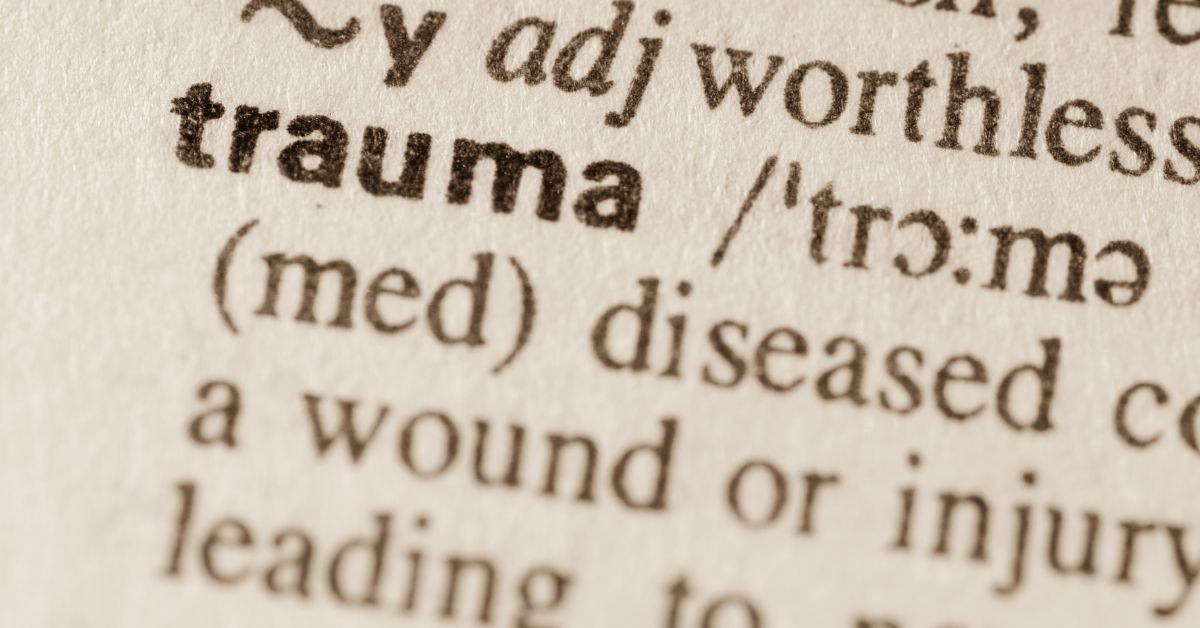- Ehlers-Danlos Syndrome and the Impact of Medical Trauma - 26 May 2024
- Is Hypermobility Linked to Autism? - 25 September 2023
- Alexithymia and Chronic Pain - 11 September 2023
Please click below if you would prefer to listen to this article on EDS and medical trauma.
Living with a lifelong condition like Ehlers-Danlos (EDS) can be a daily challenge for many reasons. Whether chronic pain, intensive or invasive treatments, or anxiety, mark it. However, for many people with EDS, the day-to-day is only the tip of the iceberg. A major and commonly overlooked part of living with EDS is medical trauma, stemming from contact with medical professionals who may not always understand, believe, or even listen. It’s something I sadly see a lot of in sessions and can even become a barrier in our work together (which we always overcome in time!). But what is medical trauma? How does it happen? And most importantly, how do we overcome it?
In this blog, we’ll explore the reality of medical trauma in the EDS community, looking at the real-life experiences of those impacted and what needs to change.
Trigger warning: This blog discusses medical trauma, PTSD, complications of EDS, and distressing medical experiences.
This article covers:
ToggleWhat is medical trauma?
An important starting point! What is medical trauma? Whilst not reflected in the DSM-V explicitly, it is understood as a form of post-traumatic stress disorder (PTSD), so let’s start there.
Post-traumatic stress disorder
PTSD is classified as a ‘trauma and stressor-related disorder’ (previously, an anxiety disorder) that develops after an experience of or exposure to a traumatic event. This can be through directly experiencing it yourself, witnessing it happen to someone else, learning the traumatic event happened to a close friend or family member, or experiencing extreme or repeated exposure to traumatic incidents (such as emergency workers). These traumatic events could include things like combat, natural disasters, road traffic accidents, sexual assault, childhood abuse, or a significant negative life event. Some of the other diagnostic features of PTSD include:
- ‘Intrusion symptoms’ such as nightmares, flashbacks, significant and prolonged distress, and physical stress responses (panic attacks, sweating, pounding heart, etc) when reminded of the trauma (voluntarily or not).
- ‘Avoidance symptoms’ such as trying not to think about what happened, suppressing feelings, and avoiding reminders of what happened (i.e., not going to certain places, being around certain people, etc).
- ‘Negative changes in thoughts and mood’ such as memory problems, negative beliefs about oneself or others, feeling detached, inability to feel good about things, blaming self or others for the traumatic event, etc.
- ‘Alterations in arousal and reactivity’ such as irritability and anger, risk-taking behaviours, hypervigilance, increased startle response (i.e., jumping easily), concentration issues, or sleep problems.
- ‘Dissociative symptoms’ such as depersonalisation (feeling detached from yourself, like watching from the outside) and derealisation (feeling like the world isn’t quite real, distant, or distorted).
How do people get medical trauma?
The International Society for Traumatic Stress Studies (ISTSS) states that medical trauma is, ‘a set of psychological and physiological responses to pain, injury, serious illness, medical procedures, and frightening treatment experiences.’
Commonly, medical trauma can manifest itself in several ways, including:
- Stemming from the type of illness, diagnosis, or injury, such as something that is or could be life-threatening or life-limiting.
- Loss of control or shock associated with the diagnosis/condition itself.
- Severe complications of the diagnosis/medical circumstances such as ruptures, tears, physical pain, etc.
- Unexpected or emergency medical interventions that may be highly distressing or arise from a situation that could have been avoided (i.e., being listened to in the first place).
- Conditions and experiences of the medical environment itself, such as repeated intrusive examinations, lack of sleep, repeated tests, etc.
Perceived or actual mistreatment by medical professionals, whether physically or verbally, such as being disbelieved, told it is ‘all in your head’, being misdiagnosed, etc.
Considering the well-known compilations of and risks associated with EDS, it is easy to see that a number (possibly, a larger number than many people realise) may have had experiences that could lead to medical trauma. Even if we were to take the scope of this blog for just a moment wider than EDS, it is astounding to see how many people will likely be experiencing things that could lead to medical trauma. For example, 17 million Americans have experienced serious, acute cardiovascular incidents, 1.7 million have survived a stroke in the UK, and chronic obstructive pulmonary disease (COPD) affects over 3 million people every year.
Considering this, Donald Edmondson’s recent research posits that the frequency with which these types of experiences and events occur, medically induced PTSD most likely represents the lion’s share of the PTSD burden in most developed countries. Yet, proper recognition of medical trauma remains a minefield.
Medical trauma – a complicated ‘fit’
Whilst life-threatening illness was previously recognised in the DSM-IV as a ‘traumatic event’ that may elicit PTSD, this was changed in the DSM-V. Why, you may ask? Well, possibly because of how medical trauma can present, compared to typical or even complex PTSD. In various studies into PTSD due to a medical reason, it’s been measured using traditional tools for PTSD. A big, glaring flaw in this of course is that PTSD arising from those types of experiences compared to medical trauma, is that PTSD typically relates to something from the past that has happened, whereas medical trauma from a lifelong condition is something that can’t remain ‘in the past’ – it must be lived with or alongside every day.
As just a couple of examples, re-experiencing or re-living is a common part of PTSD. This is where a person involuntarily and at times, very vividly, relives the trauma again, whether this is in the form of nightmares, flashbacks, or distressing images. With medical trauma, however, this concept might be taken more literally, in that a person may become overtly fearful, hypervigilant, or anxious about the same event happening again, a very literal ‘re-experiencing’, their condition progressing, or even fearing death itself.
Other common symptoms of PTSD can be avoidance behaviours. For example, suppose a major car accident happened in a specific area, and someone they knew (but survived) was involved. In that case, the impacted individual may find it exceptionally hard to go to that area or have an ongoing relationship with the other person involved, as it may bring back traumatic memories. They may, therefore, disengage from that person and take longer routes to get where they need to go, all to avoid a reminder of what they have experienced. A person with medical trauma, however, may have no choice but to go back to the same hospital and deal with the same medical professionals time and time again – causing more and more distress and, potentially, more trauma.
Put, PTSD symptoms typically stem from a past event/something that has happened. Medical trauma, especially with lifelong conditions like EDS, presents a myriad of complexities in the here and now – day to day – and into the future.
Real-Life Experiences from the EDS Community
“I literally had this conversation in therapy recently. I have trauma from gaslighting, of both doctors and family/ friends. Because of this, I get impostor syndrome and I’m convinced I’m faking, but I know I’m not. I have also got some form of I suppose ptsd from dysautonomia-related public fainting episodes that made me agoraphobic earlier this year, but I’m working though it.”
“Whenever I’m hurt or hurting, I always have in the back of my mind “am I faking this? is it really this bad?” I was constantly injured throughout college from dancing and I always felt the judgment from professors and peers and family. I don’t feel like I can trust myself to judge my pain accurately from years of invalidation.”
“Doctors diagnosed me with “growing pains” and “being hypochondriac”. My mom initially believed I was hurting and literally took me to a new doctor every month to see if they could find out what I had. Nothing, just “growing pains”. She eventually stopped believing me… I was never believed by anyone else, I was “faking it”, “an attention-seeker”, “wanting to use it as an excuse to skip class”, etc… I even got bullied for my “imaginary pain”.”
“… Don’t get me started on doctors, lol. I didn’t get diagnosed until 32. I have permanent physical damage, but also permanent mental damage, which is honestly more problematic. I don’t believe my own pain, so I end up with more physical damage. It’s a vicious cycle.”
“I was gaslit for years with my lower abdomen and back pain, told “it’s just anxiety”, when in actual fact it was endometriosis“
These personal stories highlight the major and ongoing impact of medical trauma on individuals with EDS. The recurring themes of invalidation, misdiagnosis, and emotional distress underscore the urgent need for more compassionate and informed healthcare practices. A key component of medical trauma within the EDS community, recently garnering more (much-needed) attention, is medical trauma caused directly by medical professionals.
Clinician-associated trauma
Medical trauma within the EDS community is not only prevalent but at times, made worse by interactions with healthcare professionals. This is what is known as ‘clinician-associated trauma’, and stems from repeated misdiagnoses, dismissive attitudes, lack of understanding, and lack of empathy from health professionals. This is, of course, not to tarnish every medical professional negatively (of course not!), but it is concerning that a lot of voices in and outside of research continue to say the same things, time and time again. Such major experiences contribute hugely to the upset, distress, and anxiety encountered by people with EDS.
Research from June 2023 showed that EDS patients reported feeling dismissed and undermined by medical professionals, with many describing experiences where their symptoms were not taken seriously or had been accused of exaggerating their pain levels. These interactions often left patients feeling mistrustful and reluctant to seek further care. This links very closely with findings from another study, which emphasised that clinician-related factors, such as perceived mistreatment and lack of empathy, contribute massively to psychological stress in EDS patients.
Combined, these studies highlight the urgent need for better education and training for healthcare providers to enhance their understanding and support of EDS patients. Integrating psychological support into treatment plans could be seen as being essential for improving the overall quality of life, treatment, and care for those affected by EDS, and avoiding such issues as medical or clinician-associated trauma.
Self-Support
If this blog has brought up some difficult feelings or memories – do not despair! There is help and support out there that can help with medical trauma:
- Non-directive, or person-centred, therapy, which is client-led, is supportive for individuals with trauma symptoms, traumatic experiences, or diagnoses of PTSD.
- If this doesn’t feel like a good fit, there’s a whole host of other forms of counselling approaches that may suit you instead. These range from narrative therapy, eye-movement desensitisation and reprogramming (EMDR), trauma-focused cognitive behavioural therapy (TF-CBT), and psychodynamic counselling. Each has its benefits and, at times, risks, so it’s important to research and really consider what feels best and right for you on your journey to healing.
- Involve a trusted and supportive friend, family member or partner in key appointments. When someone has experienced trauma and not yet processed what they need to, sometimes challenging and self-advocating can feel very difficult. Having someone else present to support and challenge or advocate for us, in whatever capacity, can be hugely helpful.
- Grounding techniques can be extremely helpful, especially if we have no choice but to continue to see the same people or go to the same places (especially in rural settings or specialised healthcare centres). Grounding techniques such as the 5,4,3,2,1 method, ‘square’ or ‘box breathing’ or CO2 pooling (like our course here: https://www.thefibroguy.com/product/co2-pooling-course/) can be invaluable and support in mitigating trauma-responsive behaviours and actions when facing stress/distress.
- Information is a powerful tool! Understanding why we react the way we do can, at times, foster a lot of self-compassion, which can be hugely healing. I would add a caveat, though, that when I say to learn about trauma and trauma responses, do so from informed, evidence-based platforms (not social media groups!) Misinformation can do far more damage than good.
- Reputable sources include:
I appreciate that this could have been a very heavy read. I hope it gave some answers or insight if this is something you have struggled with.
A key thing to remember, though, is that you are not alone, and you can always discuss these issues with a trusted, skilled mental health provider.
Until next time, take care!
-Seren-
Enjoyed Our Blog? Why Stop Here?
If you’ve found value in our posts, imagine what you’ll gain from a structured, science-backed course designed just for you. Hypermobility 101 is your ultimate starting point for building strength, stability, and confidence in your body.





